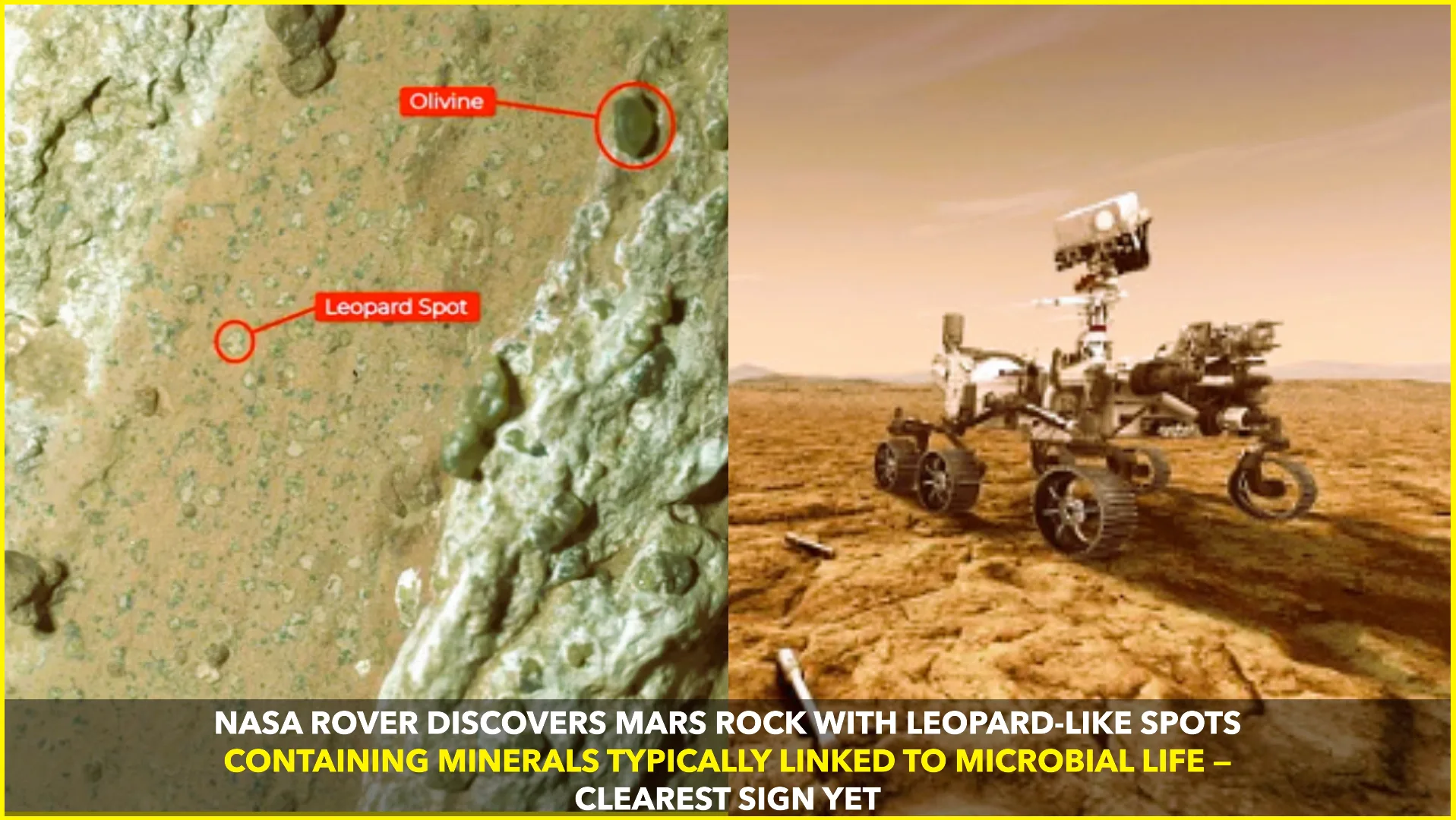Possible Life on Mars?
NASA’s Perseverance rover recently uncovered a Martian rock adorned with distinctive “leopard-like” spots—tiny dark rings surrounding lighter nodules—captured in the Jezero Crater’s Bright Angel outcrop. Collected in July 2024 and nicknamed Cheyava Falls, this arrowhead-shaped rock formed 3.2–3.8 billion years ago in a lakebed environment when Mars was wetter Wikipedia+3Reuters+3The Times of India+3.
What Makes It Stand Out?
Patterns Suggest Microbial Chemistry
The spot patterns—some researchers call them “leopard spots” or “poppy seeds”—are not only visually striking but also chemically meaningful. Instruments onboard detected the presence of vivianite (iron phosphate) and greigite (iron sulfide), minerals on Earth often linked to microbial metabolism in sediments and organic decay zones Wikipedia+3Reuters+3The Guardian+3.
Rich in Key Ingredients
The mudstone where Cheyava Falls formed contains organic carbon, sulfur, phosphorus, and iron—conditions that on Earth would likely support microbial life Wikipedia+3The Guardian+3AP News+3.
Unexplained by Known Geological Processes
Scientists evaluated non-biological explanations like volcanic heating or pure chemical alteration, but none matched the patterns and combinations as well as low-temperature redox reactions—typical of microbial activity—suggest Planetary Society+2National Geographic+2.
Why It’s So Promising
NASA insiders, including Acting Administrator Sean Duffy, described this find as “the clearest sign of life that we’ve ever found on Mars”. Another NASA official, Nicky Fox, emphasized that while not a direct observation of life itself, these findings strongly point toward a potential biosignature rather than purely physical or chemical patterns Planetary Society+3The Washington Post+3The Guardian+3.
Caution Remains
Scientists are clear: this is not proof of life, but a potential biosignature—a clue that must be interpreted carefully. To make a definitive claim, these samples must be returned to Earth for deeper lab analysis—a goal now complicated by uncertainty surrounding NASA’s Mars Sample Return mission timeline and funding Wikipedia+4Houston Chronicle+4Reuters+4.
What Comes Next?
- Laboratory testing: If and when Cheyava Falls (Sapphire Canyon sample) returns to Earth, scientists can apply advanced instrumentation to study its structure and chemistry in detail.
- Simulation experiments: Researchers may attempt to replicate the rock’s environment and spot formation processes in terrestrial labs to see if non-biological methods can produce similar textures.
- Future missions: ESA’s Rosalind Franklin rover (launching ~2028) could drill deeper below Mars’s surface, searching for better preserved microbial indicators National Geographic+2Planetary Society+2.
The Big Picture
If confirmed as biological, this discovery dramatically shifts our understanding of the universe: Mars and Earth may have hosted microbes at roughly the same early stage—suggesting life can emerge under similar conditions elsewhere National Geographic+1. At the very least, Cheyava Falls offers the most direct clue so far in humanity’s centuries-old question: Are we alone?
This development stands as a significant milestone in planetary science. Even if the findings are ultimately explained by geology, they deepen our understanding of Mars’ ancient environments and help refine where, when, and how to look next.










